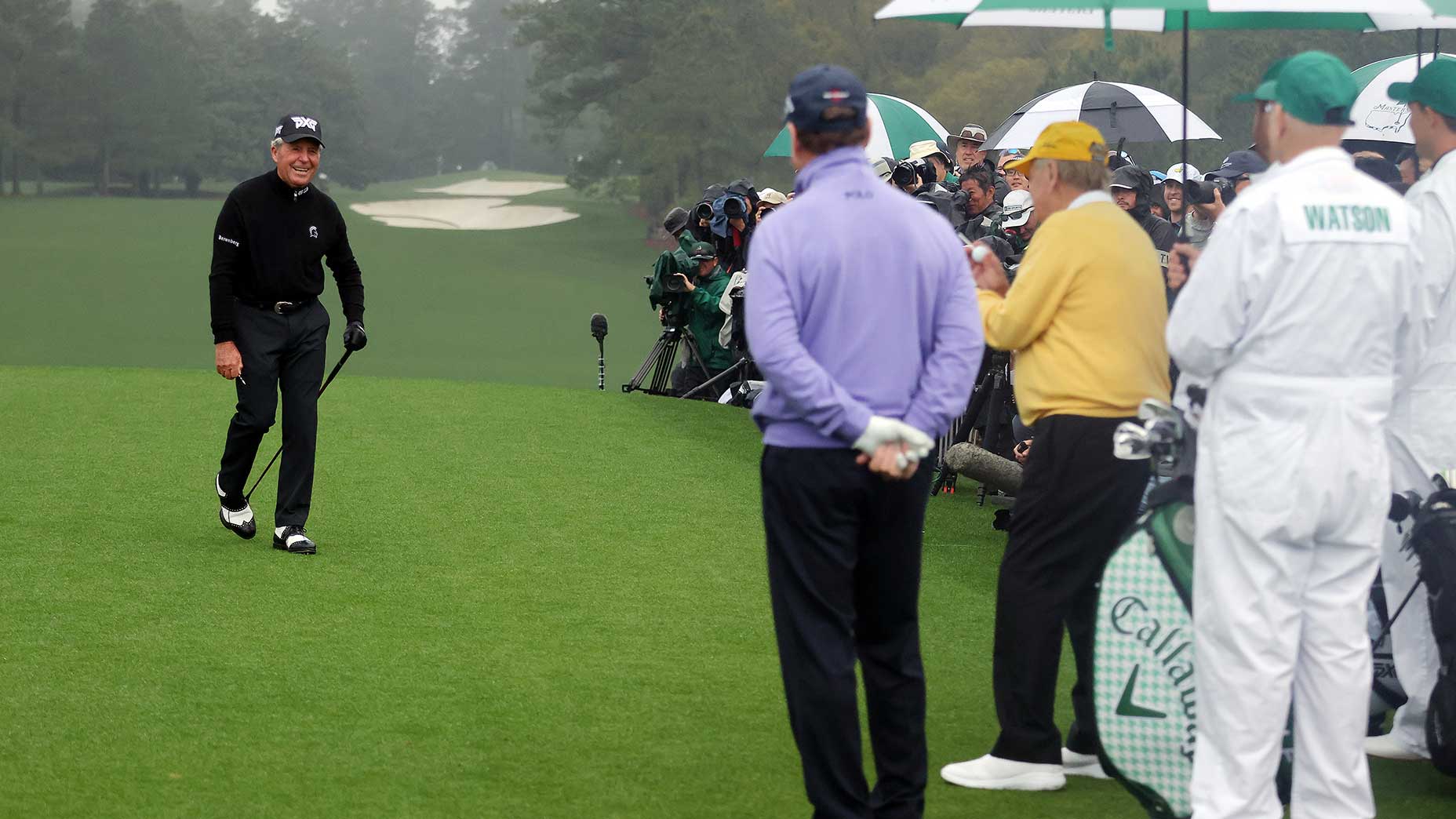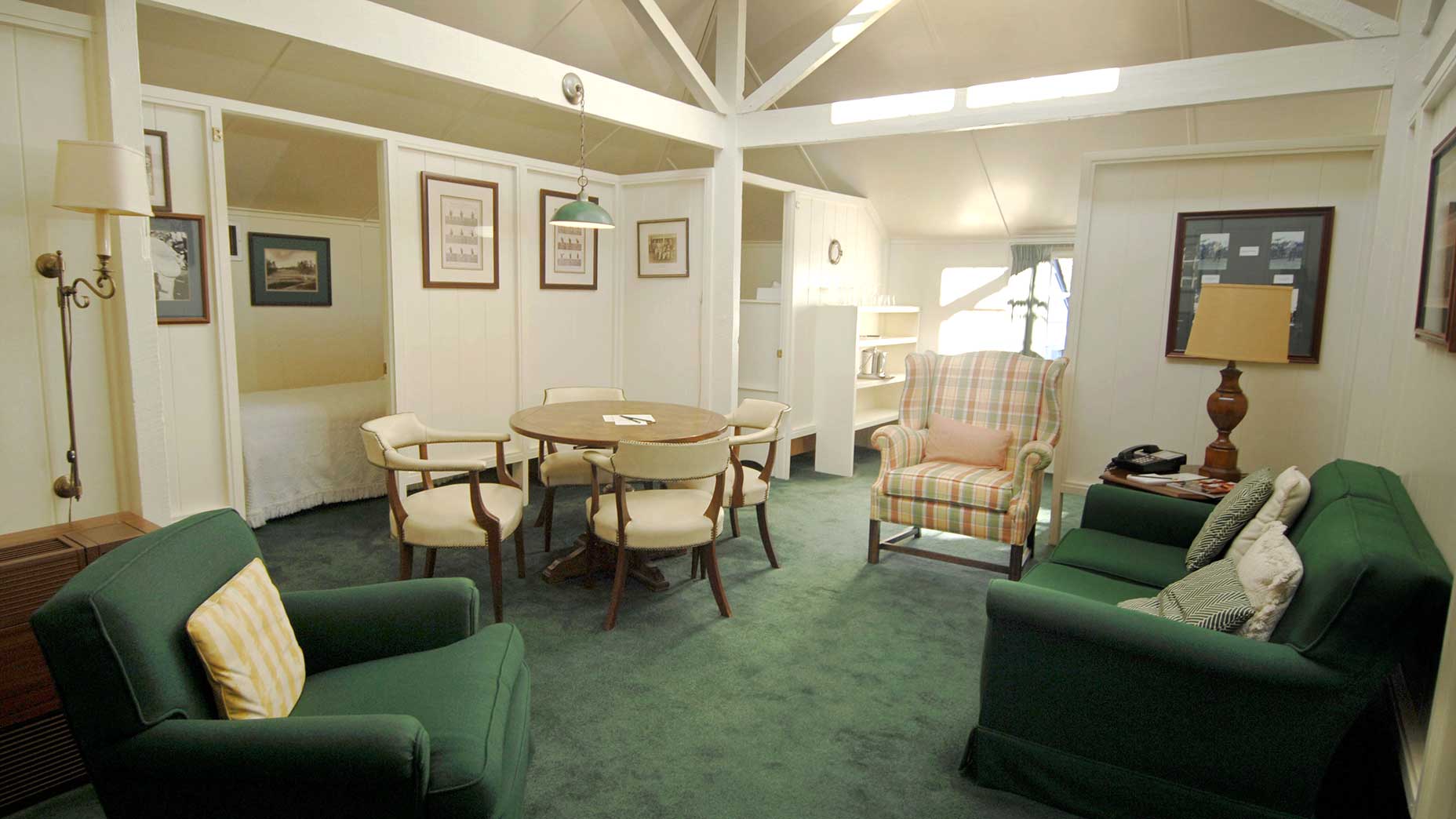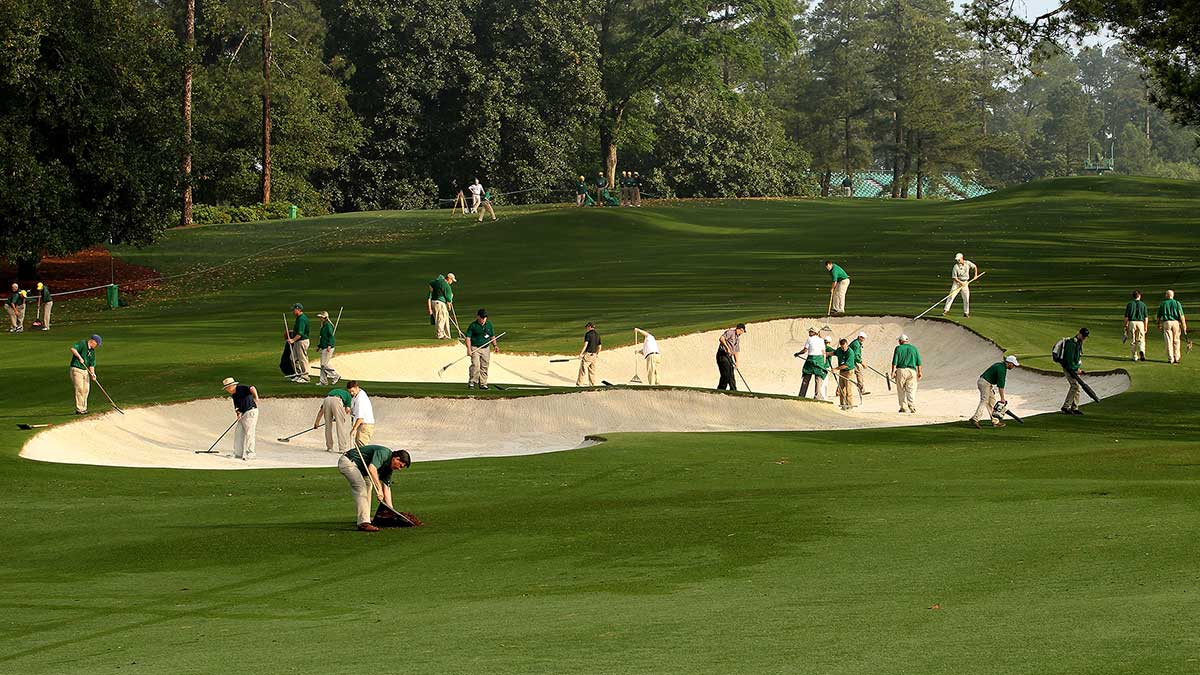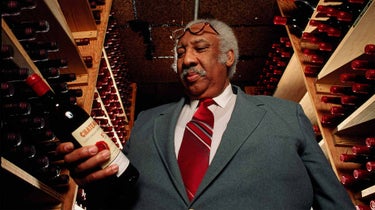
What’s it like to stay at Augusta, play the course, work on the grounds crew, host the Champions Dinner and more? We asked. They answered.
Augusta National/Getty Images
Ed. note: Just as Augusta National is the ultimate insiders’ club, the Masters is the ultimate insiders’ tournament. Nearly nine decades after the storied venue was founded, the Augusta Experience has remained shrouded in mystery. To unlock some of its secrets, last year we asked those who have been there to describe one element of what makes Augusta Augusta and the Masters the Masters. Here, in honor of Masters week and for your viewing pleasure, are all those installments in one handy place.
The Augusta National guest experience? Here’s what that’s like
By Michael Bamberger
My first trip to Augusta was to play the course. I was a working-class baseball writer with a connected friend who wasn’t in the mob. I flew from Philadelphia through a storm at night and in private jet. One pilot. One other passenger, smoking with his left hand and drinking with his right. It was terrifying.
We landed in sleepy Daniel Field in Augusta, a gent loaded our stuff in a green club van and feelings of peace washed over your correspondent.
We stayed in California Cottage, along the 10th hole. You could call the club’s front desk and ask to watch any Masters you wished on your bedroom TV. This was before YouTube and before Golf Channel, so you were seeing things you hadn’t seen before. I fell asleep watching the ’58 Masters, Arnold’s first win. The course, in black-and-white, had rough spots. Arnold’s swing was a blur. The ads featured a man in a suit talking right at you.
The next morning, I saw the club as I had never seen it before.
This was 30 or so years ago. When I went to lift my golf bag, a caddie in his white jumpsuit went running to bag, to beat me to it. All the caddies were Black, as were all the waiters and barmen and housekeepers, at least the ones I saw. All the members and guests that I saw were white, as was the pro-shop staff.
At dinner that night — coat-and-tie, of course — I wore a white shirt. I was told not to wear a striped shirt. I don’t know why but when I looked around the dining room I saw nobody in a striped shirt.
But the joys from our two-day visit are the most powerful memory.
The driving range in those days was small and charming. The grass was short and perfect. The lies were tight. The silent caddies had satchels of grass seed and dirt hanging over their shoulder and on their chests.
The course was unspeakably alive, so green and fresh. Eternal spring. From the tee, on one tee shot after another, there was almost nothing to aim at. Driver in hand, there were no trees to worry about, and no rough. All you saw was a wide carpet of green.
The course was wider than it was long, so it seemed you could wail away. Getting on the greens or near the greens in regulation was not hard. Getting the ball in the bottom of the hole was impossible. Two chips and three putts per hole yields many triples. Happy triples.
We played the nine-hole par-3 course. At the Masters, players routinely go around in in 23 or 24 or 25 shots. I recall needing about two sleeves of balls. There’s water in play on your tee shots, and on your chip shots. It’s spectacular.
The whole place was spectacular, but I’m happy to say it’s better now. Among many other things, nobody looks at you twice if you’re wearing a striped shirt in the clubhouse.
The tee shots, though, have become much harder. All those new trees. I don’t see them, in my mind’s eye. I shut my lids and see a course that’s wide and green and inviting.

Getty Images
The bill was quite hefty’: What it’s like to host the Masters Champions Dinner
By Bernhard Langer
Being fortunate to win the green jacket on two occasions, in 1985 and 1993, I had two opportunities to pick the menu for my fellow winners. The choices I made both times said a lot about where I was in my life.
The first time, I selected sauerbraten, my favorite German dish. The key is to marinate the beef for two or three days so that it is so soft and tender you won’t even need a knife. The meal also included red cabbage and an incredibly delicious dumpling known as spaetzle. If you haven’t had spaetzle, you have really been missing something. Then I topped it off with Black Forest cake. My mom made an awesome Black Forest cake when I was a kid.
The chefs at Augusta were just as awesome. They really did their homework to make sure every part of the meal was authentic. I was thrilled when the guys told me how much they enjoyed it. Nobody turned it down.
The second time, I went with the typical Thanksgiving meal: turkey, mashed potatoes, stuffing, cranberry sauce — the works. I didn’t pick that meal only because I loved the food. I picked it because I wanted to give thanks to the country that had become my new home — I had lived in America for about a decade by then — and to the Lord. I had become a Christian by 1994. The food on this occasion was just as incredible.
The bill for the two meals was quite hefty, especially when you add in the drinks, but I didn’t mind one bit. I’m sure that’s how every champion feels. I remember sitting in that room the first time realizing that I was going to be part of this for the rest of my life. [With reporting by Michael Arkush.]
What it’s like to win the Masters media lottery
By Josh Berhow
The Masters does a lot right. Cheap concessions, perfectly manicured fairways, a very good golf tournament. But did you know Augusta National lets 28 randomly selected media members play the course every year? It’s one of the coolest perks in the business. That is, if you win the lottery, like I did in 2016.
The lucky souls go off in seven foursomes the Monday after every Masters, firing at the same pins that were in play a day earlier. As a participant, it’s less the most memorable round of your life than it is the most memorable blur of your life.
You’re told to show up an hour before your tee time but not a minute earlier, and the complete Augusta National experience is offered. You drive down Magnolia Lane. You eat breakfast on property. You’re assigned a spot in the Champions Locker Room (I shared a locker with my good pals Zach Johnson and Billy Casper). Eventually, amid the fastest hour imaginable — your only time to explore a nearly deserted Disney World for golfers — you meet your club caddie at the range, take a couple of swings and hustle to the 1st tee.
Without patrons, the course seems almost normal, a sleepy private club on a vast green expanse. The looming round presents a fascinating dilemma: Do you smile and smell the azaleas for the next five hours? Or do you grind and sweat and bear down like never before?
The answer is probably somewhere in between, although I leaned toward the latter; this was my Super Bowl, World Cup and Olympics rolled into one. I started par-bogey-par-bogey before things went sideways. Nerves rarely lose.
The entire day is magical, which is a word one shouldn’t utter often. Walking the fairways, you catch yourself thinking about the history, the golfers who’ve won there, the people you can’t wait to tell you played there and others, passed on, who you can’t. But nothing lasts forever. After driving back down Magnolia Lane, taking a left and turning into a Walgreens parking lot to get luggage in order for the flight back home, the real world comes back at you quickly.
No matter, playing Augusta National guarantees you own airport small-talk forever.

Getty Images
What it’s really like to hit a ceremonial opening tee shot at the Masters
By Gary Player
I’ve had the amazing honor, every Thursday morning since 2012, of hitting the ceremonial tee shot at the Masters, and it never gets old. As a matter of fact, I have no doubt that, once again this year, I will feel the same butterflies I’ve always felt. And I’ve been coming to Augusta National since Dwight D. Eisenhower was president!
My favorite part of the day is the walk from the clubhouse to the first tee. I’m so moved by the patrons who come out that early to cheer on me and Jack. I’m getting emotional right now even thinking about it.
People want to slap my hand and I’m happy to accommodate them. I’m so grateful for their support and for the memories I have of this remarkable tournament, win or lose. Each year, I’m more grateful than the year before.
As for the tee shot itself, I take it very seriously. This is my one shot of the whole week, and I want to hit a good one. I will practice for over 30 minutes that morning, much of it in the dark. Finally, after Chairman Ridley calls my name and I acknowledge the applause, I step to the tee and let it rip.
The ball doesn’t go very far, as you’re hitting right into the steep bank on hole No. 1. Normally my drives these days go to about 240 yards. Not bad. I’m 86 years old! And as competitive as ever. I’m proud to say that I now out-drive Jack. I know it irritates him because he’s so competitive, but he hit it way past me in our prime, so I’m glad I can now give him a little of his own medicine.
Of all the honors I’ve had in this game that has been my life, hitting the ceremonial tee shot at the Masters ranks right up there. I can’t see stopping any time soon. [With reporting by Michael Arkush.]
‘How could I ever beat this guy?’ And other confessions of a Masters rookie
By Gary Koch
Arriving in my old Dodge Dart on the Saturday afternoon before the first round in 1974 — I was a kid from the University of Florida, for goodness sake — I was totally in awe. So much so that I drove as slow as humanly possible, soaking up every moment.
The way I was looking around, it’s a wonder I didn’t crash into something. That would have been some kind of Masters debut, wouldn’t it?
Anyway, on my left side, I saw a few pros hitting balls to their caddies. I tried to see who they were, but I was too far away.
Shortly afterward, I checked into the Crow’s Nest. I decided I would hit balls instead of going on the course. I messed around for a bit on the putting green and then walked over to the first tee, trying to imagine what it would be like to hit the first shot on Thursday.
I looked down to the left of 18 and saw a big open area where, back then, they allowed players to hit balls. There was one guy hitting shots to his caddie who was a couple hundred yards away — high, towering iron shots that required the caddie to take only one step to his right or one to his left or maybe one step straight ahead to retrieve the ball.
I kept shaking my head, thinking, I’ve never hit one shot that looked like those. How could I ever beat this guy?
I sat there mesmerized for about 10 minutes and walked back up the hill to the clubhouse, my confidence shaken. It was definitely time to reevaluate my expectations for my first Masters. The guy was Tom Weiskopf, who wound up tying for second that year behind Gary Player. I missed the cut. [With reporting by Michael Arkush.]
What it’s like to rinse a ball on Augusta National’s 12th hole with the green jacket on the line
By Larry Nelson
People ask me all the time: If you had one shot to do over in your career, what would it be? The answer is always the same: I would have played it safe at No. 12.
The year was 1984. As I stood on the tee on Sunday afternoon, I trailed Ben Crenshaw by only one shot. I felt invincible, having just made a birdie at No. 11, the most difficult hole on the course, after hitting a 4-iron to about 12 feet. And that was my problem.
One should never feel invincible at Augusta National. That’s usually when you make your most costly mistakes. Instead of hitting a 7-iron to the middle of the green and being satisfied walking away with a 3 — that’s what Jack Nicklaus and all the veterans usually did — I tried to cut a 6-iron to the traditional back-right pin position.
I failed, and I knew it right away. I hit it so fat that I didn’t know whether to tell the ball to get up or get down, as there was a chance it might not even make it to the water. It did, of course, and I wound up with a double bogey.
I still wasn’t out of it, as Ben still had to get through 11 and 12. I certainly had my chances coming in but couldn’t make anything. Ultimately, I finished fifth, four strokes behind Ben.
Given that I’m from Georgia, the victory would have been that much sweeter. Even so, at the age of 36, I figured I would have at least a few more good chances to get the green jacket before my career was over. I didn’t.
My chance was in 1984, and, because of the shot at 12, I didn’t take advantage of it. [With reporting by Michael Arkush.]

Bloomberg via Getty Images
Inside the Crow’s Nest at Augusta National. What it’s like to stay there
By Ricky Barnes and Doug Ghim
Barnes: There is no point in burying the lede: In 2003, when I stayed at the Crow’s Nest after having won the U.S. Amateur the year before, I snuck into the Champions Locker Room. And with vodka in hand.
Let me be clear: I wasn’t up to any real mischief. Along with the British Amateur champ Alejandro Larrazabal, I was just doing some innocent exploring on the Sunday night after the tournament ended. No one else was around. We were curious. We were young.
At one point, Alejandro tried on the green jacket that had been worn by the two-time champ José María Olazábal. “You got to put one on,” he told me. “No way,” I told him. “Not until I get back here one day and hoist one.”
The two of us laughed so hard that night, soaking it all in. We finally shut it down around 3 a.m.
Ghim: I stayed only one of the nights because I was staying with my family for the week in a rental home. But I thought it was important to do it at least once, to get a good feel for it.
The year was 2018, and all the amateurs decided to stay there the same night, on Monday, because that was when they have the dinner for the amateurs. We all got dressed up, went out and then came back and watched the national championship game for college basketball.
Barnes: As for the accommodations themselves, it wasn’t exactly the Four Seasons. There was one little TV, one small bathroom and a couch that had upholstery from 1965. I thought to myself, If you have four grown men in here at once, there is practically no place to sit. And, being 6-foot-3, my feet were definitely hanging off the bed when I slept.
Ghim: Yeah, it’s not very big, and it’s pretty cold up there. But it’s so cool because you definitely feel like it hasn’t changed over the years. It’s like one big room with five beds separated by dividing walls, which don’t go all the way up to the ceiling.
On the walls, they have all the pictures of, like, Arnold Palmer and Jack Nicklaus and all of that. And then the bathroom is a very vintage-tiled bathroom. The shower’s tight. One of the ams, who was pretty tall, had to kind of crouch. You can definitely tell that they tried hard to keep it the same way for a very long time.
Barnes: I wouldn’t have changed one thing about staying there that week. That was an incredibly special time in my life, with wonderful memories and stories that will last forever. Besides, I was in college at the time. It wasn’t like I’d been living a lavish lifestyle.
When I went back to Augusta National to play in the 2010 Masters, I poked my head into the Crow’s Nest. “You like the small quarters up here?” I joked with a couple of the amateurs.
Ghim: It’s almost like you’re in a time capsule. We heard a story that someone tried to donate a big TV, and they said, “If we wanted a bigger TV, we would have one.” [With reporting by Michael Arkush and Jessica Marksbury.]

Getty Images
What it’s like working on the Masters grounds crew, according to a superintendent who has done it
By Anonymous Masters Grounds Crew Worker
For several years, I worked on the volunteer grounds crew at Augusta National, one of about 100 superintendents who wing in from around the country to help during Masters week. Unlike most unpaid jobs, it’s not an easy gig to get. You write a letter, and there’s a waiting list. If they think you’re up to snuff, they put you in the bullpen in case a spot opens.
I’ve worked multiple U.S. and British Opens too, and I would say that Augusta has about double the manpower and maintenance fleet of those events. I worked fairway duty, part of a fleet of 14 mowers. To put that in perspective, most top-shelf clubs use two mowers. Starting early in the morning, we’d mow the driving range and the chipping area, then we’d split into two teams, one for each nine, and mow the fairways in an offset conga-line formation.
To help ensure that everything went just right, inside each mower, they had a slit tennis ball dangling on a string from the roof of the cabin, so that the tennis ball was hanging near your lap. If you saw any problems with the mower just ahead of you, you were supposed to toss the tennis ball out the window to alert the other drivers. I never had reason to toss a tennis ball myself.
But one morning, as we’re mowing the second fairway, I saw a tennis ball come bounding across the fairway up ahead. We all immediately came to a stop and pulled off the fairway. It turned out that a pinecone had gotten caught in one of the mowers, and it was causing tiny gouge marks in the fairways. The damage was so minor, you could barely see it. But that was enough to bring everything to a temporary halt. By the next day, the tiny gouge marks were gone. They took care of them quick.
Another thing about the mowing is that they have you go in just one direction, from green to tee. That’s mostly for presentation. They want a uniform look, without stripes. Some people also say that mowing the grass against the direction of play minimizes rollout. But I’m not sure that makes a difference, given how tight they cut those fairways.
How low do they go? I once asked my supervisor, and he said he could only tell me that they had the knife beds set to a quarter inch. That’s extremely short, maybe twice as low as the average course.
“So, we’re mowing to a quarter inch?” I asked incredulously.
“I didn’t say that,” my supervisor replied, with a wink.
At Augusta, they play everything close to the vest, and they keep everything they can out of sight. Their pump station is massive, and it’s underground. That’s unusual. And they have a backup system just like it.
But they’re probably most secret about the greens. In my stints there, only full-time staffers and interns got to work them, and when they talked about the greens over the radio, they used code. One time I was in the maintenance shop and an assistant walked through. He was wearing an earpiece, but it somehow got unplugged so we could hear what was being said. The 8th green needed “a procedure.”
I wondered what that meant. The maintenance building is close to the 8th green, so I walked out for a look. It turned out the green needed what’s known as an Augusta double-cut, where they mow back and forth over the exact same path. Two guys do the double cutting, each mowing twice over the same area, which means they’re basically cutting the green four times. They want the putting surfaces running at “championship speed.”
They won’t tell you how fast they stimp, but one year, during volunteer week, when they let you play the course, I put a stimpmeter in my bag. I knew I couldn’t let anyone see me, so I had to wait for an opportunity. Finally, when we got to the 15th green and it looked like no one else was around, I went to a relatively level area at the back left of the green. It was stimping at 14. And that’s during volunteer week!
Just as I got the reading, I noticed that a bunch of other supers in other groups were watching and heading over toward me. They weren’t mad. They were curious. I didn’t get reported. Otherwise, no way I would have been invited back. [With reporting by Josh Sens.]











